#artist: cliff richard
Explore tagged Tumblr posts
Text

Tracklist:
Magic • Suddenly • Dancin' • Suspended in Time • Whenever You're Away from Me • I'm Alive • The Fall • Don't Walk Away • All Over the World • Xanadu
Spotify ♪ YouTube
#hyltta-polls#polls#language: english#decade: 1980s#Film Soundtrack#Symphonic Rock#Rock Musical#Pop#Disco#Progressive Pop#Show Tunes#Soft Rock#Big Band#artist: electric light orchestra#artist: olivia newton-john#artist: cliff richard#artist: the tubes#artist: gene kelly
22 notes
·
View notes
Text

Rocky Cliff with Stormy Sea, Cornwall by William Trost Richards, 1902.
#classic art#painting#watercolor#william trost richards#american artist#20th century#pre-raphaelite#hudson river school#landscape#nature#seascape#sea#cliffs#cornwall#england
121 notes
·
View notes
Text
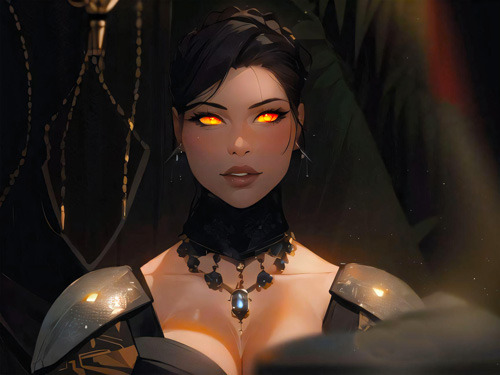
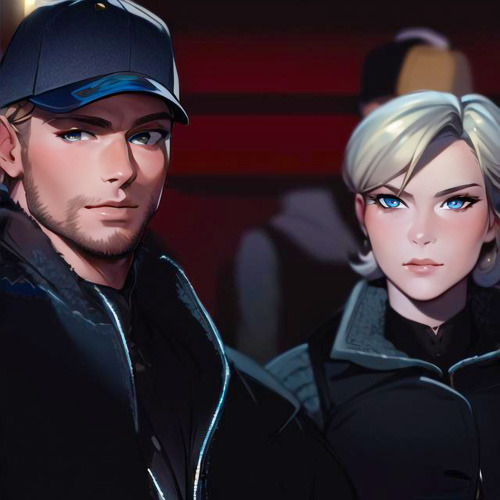

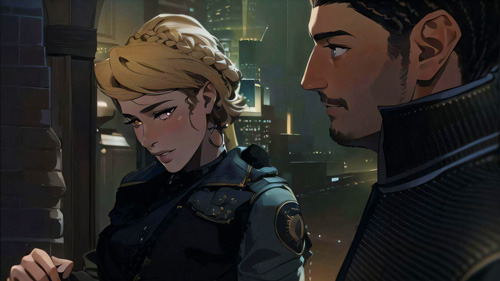
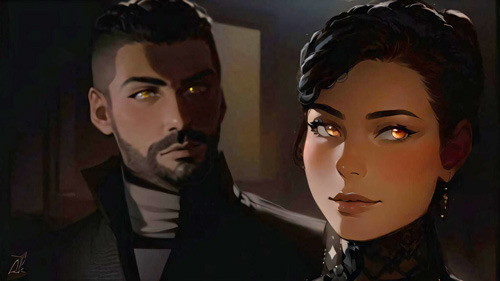


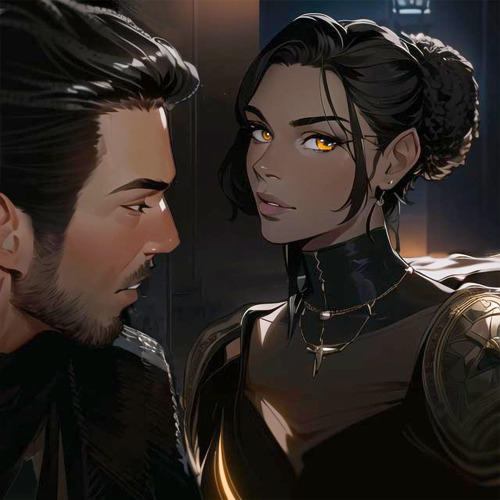
Stargate as Anime.
#stargate sg1#anime#samantha carter#jack oneill#orici#adria#ori#goa'uld#amanda tapping#richard dean anderson#lord ba'ul#morena baccarin#cliff simon#ai mirror#photoshop#ai art#mood#my edits#orici x daniel#daniel jackson#stargate#artists on tumblr#photography#sg1
22 notes
·
View notes
Text








My OC Posey and her backstory.
#artists on tumblr#medibang#gorillaz oc#gorillaz au#murdoc x oc#murdoc gorillaz#oc#cliff richard#backstory
2 notes
·
View notes
Text
#DetectiveComics #FuturesEnd (2014) #JasonFabok & #BradAnderson 3D Motion Cover, #BrianBuccellato Writer, #CliffRichards, #ScottHepburn & #FabrizioFiorentino Artists, 1st Appearance of #KillerCroc (#WaylonJones Futures End) "Anniversary" #Batman takes his war on crime to the next level, but he needs the help of his greatest ally - The Riddler?! https://www.rarecomicbooks.fashionablewebs.com/Detective%20Comics%20Futures.html#1 @rarecomicbooks Website Link In Bio Page If Applicable. SAVE ON SHIPPING COST - NOW AVAILABLE FOR LOCAL PICK UP IN DELTONA, FLORIDA #KeyComicBooks #DCComics #DCU #DCUniverse #KeyIssue

#Detective Comics Futures End (2014) Jason Fabok & Brad Anderson 3D Motion Cover#Brian Buccellato Writer#Cliff Richards#Scott Hepburn & Fabrizio Fiorentino Artists#1st Appearance of Killer Croc (Waylon Jones Futures End)#Rare Comic Books#Key Comic Books#DC Comics#DCU#DC#Marvel Comics#MCU#Marvel#Marvel Universe#DC Universe#Dynamite Entertainment#Dark Horse Comic Books#Boom#IDW Publishing#Image Comics#Now Comics
0 notes
Text
Feature Artist / Cliff Richard / 9am ET
Sir Cliff Richard OBE (born Harry Rodger Webb; October 14, 1940) is a British singer and actor. He has total sales of over 21.5 million singles in the United Kingdom and, as of 2012, was the third-top-selling artist in UK Singles Chart history, behind the Beatles and Elvis Presley. Richard was originally marketed as a rebellious rock and roll singer in the style of Presley and Little Richard.…

View On WordPress
0 notes
Text
Pet Shop Boys' song picks for various radio interviews for Nonetheless
BBC Radio 2 with Jo Whiley (April 25, 2024)
Chris
Black Beauty theme (childhood song)
Bedsitter by Soft Cell
Ain't No Stoppin' Us Now by McFadden & Whitehead (death song)
Neil
The Young Ones by Cliff Richard and the Shadows (childhood song)
Bedsitter by Soft Cell
Fantasia on a Theme by Thomas Tallis by Ralph Vaughan Williams (death song)
BBC Radio 6 with Lauren Laverne (April 26, 2024)
Chris
Was That All It Was by Jean Carn
This Time Baby by Jackie Moore
Native New Yorker by Odyssey
Last Night A DJ Saved My Life by InDeep
Neil
Borderline by Madonna
I Want You by Marvin Gaye
Born Slippy by Underworld
Whole Lotta Love by Led Zeppelin
Greatest Hits Radio with Jackie Brambles (April 28, 2024)
Chris
Baby Love by The Supremes
For Once in My Life by Glen Campbell
Rhythm is a Dancer by Snap!
Neil
Girl Don't Come by Sandie Shaw
Whole Lotta Love by Led Zeppelin
Unfinished Sympathy by Massive Attack
BBC Radio 3 with Jess Gillam (June 8, 2024)
Neil
Ich Habe Genung (Cantata No 82) by J.S. Bach
Générique by Miles Davis
Symphonia Virginum: O Dulcissime Amator by Hildegard von Bingen
September Song by Kurt Weill; sung by Lotte Lenya
Tracks of My Years with Vernon Kay (June 9, 2024)
Chris
Stop! In the Name of Love by The Supremes
Fame by Irene Cara
Never Give You Up by Sharon Redd
Let Me Love You For Tonight by Kariya
A Love So Beautiful by Roy Orbison
Neil
I Am The Walrus by The Beatles
Papa Was A Rollin' Stone by The Temptations
Do Anything You Wanna Do by Eddie and the Hot Rods
This Is Not America by David Bowie
Unfinished Sympathy by Massive Attack
Artists in Residence - Queer (Nov. 11, 2024)
Homosexuality by Modern Rocketry
Smalltown Boy by Bronski Beat
Walk On The Wild Side by Lou Reed
I Was Born This Way by Carl Bean
Dizzy by Olly Alexander
Shoot Your Shot by Divine
Menergy by Patrick Cowley
Streets of Philadelphia by Bruce Springsteen
Never Give You Up by Sharon Redd
Hideous by Oliver Sim (ft. Jimmy Somerville)
In the Evening by Sheryl Lee Ralph
If Love Were All by Judy Garland
Artists in Residence - Producers (Nov. 12, 2024)
I'm So Hot For You by Bobby O
Hey DJ by Worlds Famous Supreme Team (Stephen Hague)
Slave To The Rhythm by Grace Jones (Trevor Horn)
I Like You (Shep Pettibone Mix) by Phyllis Nelson (Shep Pettibone)
Point of No Return by Exposé (Lewis Martineé)
Axel F by Harold Faltermeyer
Hold That Sucker Down - Builds Like a Skyscraper Mix by OT Quartet (Rollo)
Balcony Scene from Romeo + Juliet by Craig Armstrong
So Hard - D Morales Red Zone Mix by Pet Shop Boys (David Morales)
The Loving Kind by Girls Aloud (Xenomania)
Say You Will by Kanye West (Andrew Dawson)
It's Automatic by Zoot Woman (Stuart Price)
The Meeting Place by The Last Shadow Puppets (James Ford)
Artists in Residence - Miserablism (Nov. 13, 2024)
Has Anyone Ever Written Anything For You by Stevie Nicks
One Day I'll Fly Away by Randy Crawford
Please, Please, Please, Let Me Get What I Want by The Smiths
Baltimore by Nina Simone
Alfie by Cilla Black
Everybody's Got To Learn Sometime by The Korgis
Nothing Compares 2 U by Sinéad O'Connor
Parlez-moi de Lui by Françoise Hardy
By The Time I Get To Phoenix by Glen Campbell
Mercy Mercy Me (The Ecology) by Marvin Gaye
I Don't Want To Hear It Anymore by Dusty Springfield
I'm Not In Love by 10cc
Let's Stay Together by Tina Turner
I Can't Give Everything Away by David Bowie
Artists in Residence - Remixes (Nov. 14, 2024)
Girls & Boys (Pet Shop Boys Remix) by Blur
Young Offender - Jam and Spoon Trip-O-Matic Fairytale Mix by Pet Shop Boys
Hallo Spaceboy (Pet Shop Boys Remix) by David Bowie
Flamboyant (Michael Mayer Kompakt Mix) by Pet Shop Boys
Insanely Alive (Pet Shop Boys Radio Edit) by Wolfgang Tillmans
Miserablism (Moby Electro Mix) by Pet Shop Boys
Queen of Ice (Pet Shop Boys 7" Mix) by Claptone
I Don't Know What You Want But I Can't Give It Anymore (Peter Rauhoffer's Roxy Anthem Mix) by Pet Shop Boys
Think Of A Number (Pet Shop Boys Magic Eye 12" Remix) by Noel Gallagher's High Flying Birds
Can You Forgive Her? (M.K. Remix) by Pet Shop Boys
Love Comes Quickly (Shep Pettibone Mastermix) by Pet Shop Boys
Dancing Star (Solomun Remix) by Pet Shop Boys
A Red Letter Day (Trouser Enthusiasts Autoerotic Decapitation Mix) by Pet Shop Boys
#pet shop boys#psb#ive been meaning to do this but then new interviews kept popping up 😭#anyway proof chris is also a romantic skjddk
23 notes
·
View notes
Text
"Long Legged Girl (With the Short Dress On)" (1966-1967)
Recorded on June 29, 1966 at MGM Soundstage, Hollywood · Released as Single on April, 1967 and on the Soundtrack album Double Trouble on June, 1967.
MUSICIANS Guitar: Scotty Moore, Tiny Timbrell. Harmonica & Guitar: Charlie McCoy. Bass: Bob Moore. Drums: D.J. Fontana, Buddy Harman. Piano: Floyd Cramer. Steel Guitar: Pete Drake. Saxophone: Boots Randolph. Trombone: Richard Noel. Vocals: The Jordanaires. OVERDUBS, Guitar: Mike Deasy. Bass: Jerry Scheff. Drums: Toxey Sewell. Saxophone: Michael Henderson, Butch Parker.

Elvis as Guy Lambert in Double Trouble (1967).
RECORDING SESSION Soundtrack Sessions for MGM’s Double Trouble June 28-29, 1966 (7PM–12AM; 1–3AM): Radio Recorders and MGM Studios Recording Stage, Hollywood. Ever since the frustrating exercise of making the music for his first two movies, Love Me Tender and Loving You, Elvis had insisted on doing his soundtrack recording in a regular studio setting, not on a large, impersonal sound stage where he felt he couldn’t perform at his best. Disgusted with yet another round of lackluster material provided by his own publishing companies, Elvis showed up late at Radio Recorders for the Double Trouble sessions; but this time the result was that MGM studio executives moved the next night’s sessions to their own sound stage, saving money for themselves and for the film’s eventual bottom line (in which Elvis and the Colonel too had a share). Elvis had long since learned from Colonel Tom to be mindful of his obligations, and he raised no explicit objections—but he could not have been pleased when he heard the sound of the recordings they were making. The soundstage had all the presence of a giant tin can. Poor miking and generally sloppy engineering produced a sound that might have worked for mono cinema playback, but scarcely for the work of a major recording artist. (...) The session concluded with the rerecording of a single with a title as long as the song was short — “Long Legged Girl (With A Short Dress On),” which ran, mercifully, for one minute, twenty-seven seconds. Excerpt: "Elvis Presley, A Life in Music: The Complete Recording Sessions" by Ernst Jorgensen. Foreword by Peter Guralnick (1998)


RELEASE On April 28, 1967 "Long Legged Girl (With the Short Dress On)" was released as A-Side Single (backed with "That’s Someone You Never Forget", which had originally appeared on 1962’s Pot Luck; ref. 47-9115) by Elvis Presley with the Jordanaires. A couple of months later, in June 1967, it came out on the Soundtrack album Double Trouble (ref. RD-7892).
youtube
LYRICS — "Long Legged Girl (With the Short Dress On)" Songwriters: John Leslie McFarland/Winfield Scott All right I've been thumbing rides, travelling light Walking streets 'til past midnight Tramping roads, trails, and lanes Scaling cliffs, fields, and plains Searching 'til the early dawn For that long-legged girl with the short dress on Riding trucks, bikes, and skis Sailing lakes and brooks and seas Driving wagons, cars, and jeeps Walking stilts in ten foot leaps Searching 'til the early dawn For that long-legged girl with the short dress on And everywhere I go, she's been and gone She's fine (she's fine) It's just too bad she's the travelling kind So fine (so fine) I just can't rest 'til I make her mine I've been from Maine to Tennessee Mexico and Waikiki Rain or shine, sleet or snow Searching high, then I'm searching low Everything depends upon For that long-legged girl with the short dress on She's fine (she's fine) It's just too bad she's the travelling kind So fine (so fine) I just can't rest 'til I make her mine Well, I've been from Maine to Tennessee Mexico and Waikiki Rain or shine, sleet or snow I'm searching high, well, I'm searching low 'Cause everything depends upon For that long-legged girl with the short dress on The long-legged girl with the short dress on
youtube
Elvis performing "Long Legged Girl (With The Short Dress On) in scene from Double Trouble (1967).
#Spotify#Youtube#in each of his sountrack albums there's some gems#at least i like this song very much#it's a song that always pops in my head out of the blue#it's contagious#elvis presley#elvis history#elvis music#elvis movies#elvis' soundtrack albums#“Long-legged Girl (With the Short Dress On)”#1966#double trouble#1967#60s elvis#elvis#elvis the king
15 notes
·
View notes
Text


“A Great Poet and Lyricist:” Peter Sinfield Dies at 80
- Musician and producer wrote for King Crimson, Emerson, Lake & Palmer and others
Peter Sinfield, who wrote lyrics for King Crimson and Emerson, Lake and Palmer among other recording artists, has died at 80.
The cause of Sinfield’s Nov. 14 death was not disclosed, but the but the lyricist “had been suffering from declining health for several years,” Crimson’s DGM Live said in a statement.
“Fly well, Peter,” Robert Fripp said in posting the announcement of his collaborator’s death.
Sinfield is credited with christening King Crimson and wrote its lyrics from 1969 to 1971 while serving as Fripp’s co-producer. He followed Greg Lake over to ELP, for whom Sinfield wrote the words for such albums as Brain Salad Surgery, Works Volumes I & II and Love Beach, while also recording a solo album, Still, in 1973.
Carl Palmer eulogized Sinfield as a “great poet and lyricist.”
“Peter will be sadly missed,” Palmer said in a statement. “A great person to be with and very funny. … He was a big inspiration to ELP and will be remembered until the end of time. His lyrics were some of the finest.”
Sinfield’s other credits including producing Roxy Music and providing lyrics for such artists as Cher, Cliff Richard, Celine Dion and others.
11/15/24
6 notes
·
View notes
Text

Sir Cliff Richard,
OBE (born Harry Rodger Webb; 14 October 1940) is a British singer and actor. He has total sales of over 21.5 million singles in the United Kingdom and, as of 2012, was the third-top-selling artist in UK Singles Chart history, behind the Beatles and Elvis Presley.
Richard was originally marketed as a rebellious rock and roll singer in the style of Presley and Little Richard. With his backing group, the Shadows, he dominated the British popular music scene in the pre-Beatles period of the late 1950s to early 1960s. His 1958 hit single "Move It" is often described as Britain's first authentic rock and roll song. In the early 1960s, he had a successful screen career with films including The Young Ones, Summer Holiday and Wonderful Life and his own television show at the BBC. Increased focus on his Christian faith and subsequent softening of his music led to a more middle-of-the-road image, and he sometimes ventured into contemporary Christian music.
In a career spanning over 65 years, Richard has amassed several gold and platinum discs and awards, including two Ivor Novello Awards and three Brit Awards. More than 130 of his singles, albums, and EPs have reached the UK Top 20, more than any other artist.[8] Richard has had 67 UK top ten singles, the second highest total for an artist (behind Presley). He holds the record, with Presley, as the only act to make the UK singles charts in all of its first six decades (1950s–2000s). He has achieved 14 UK No. 1 singles, and is the only singer to have had a No. 1 single in the UK in each of five consecutive decades. He also had four UK Christmas No. 1 singles, two of which were as a solo artist; "Mistletoe and Wine" and "Saviour's Day".
By the late-1990s, Richard had sold more than 250 million records worldwide, making him one of the best-selling music artists of all time. He has never achieved the same popularity in the United States despite eight US Top 40 singles, including the million-selling "Devil Woman" and "We Don't Talk Anymore". In Canada, he had a successful period in the early 1960s, the late 1970s and early 1980s, with some releases certified gold and platinum. He has remained a popular music, film, and television personality at home in the UK as well as Australia, New Zealand, South Africa, Northern Europe and Asia, and retains a following in other countries. When not touring, he divides his time between Barbados and Portugal. In 2019, he relocated to New York.
Daily inspiration. Discover more photos at Just for Books…?
6 notes
·
View notes
Text

Tracklist:
A Misunderstood Man • Sleep Of The Good • Gypsy Bundle • Had To Be • When You Thought Of Me • Dream Tomorrow • I Do Not Love You Isabella (Heathcliff's Wedding Song) • Choosing When It's Too Late • Marked With Death • Be With Me Always
Youtube
#hyltta-polls#polls#artist: cliff richard#language: english#decade: 1990s#Adult Contemporary#Show Tunes#tw g slur
8 notes
·
View notes
Text

British Coastal View (Coast of Cornwall) by William Trost Richards, 1880.
#classic art#painting#william trost richards#american artist#19th century#pre-raphaelite#hudson river school#landscape#nature#seascape#sea#cliffs#cornwall#england
42 notes
·
View notes
Text
In Cabaret, Set and Costume Designer Tom Scutt Wanted to Celebrate Queer Individuality
The British designer is currently double nominated for his work in the Broadway revival, which allows audiences to sit in the Kit Kat Club.
BY DYLAN PARENT JUNE 05, 2024

Tom Scutt is a stickler for details. For the designer, who headed the redesign of the August Wilson Theatre for Cabaret at the Kit Kat Club, the show isn’t only on the stage. It’s all around the theatre. As Scutt sits in the Green Bar, one of the many new audience lounges built for this revival, he shows off the space’s floral-patterned fabric.
“The Green Bar sort of became a bit of a manifestation of [Sally Bowles],” Scutt explains. “The seat covers in here are the same fabric as her suitcase in the show.” If, during Act One’s playful “Perfectly Marvelous,” one is seated on the correct side of the in-the-round stage, one might be able to peek inside Sally’s open, Mary Poppins-like suitcase decorated with butterflies, tassels, and hand drawings.
Explains Scutt: “I like the idea that the Kit Kat Club is real at a certain level. It's actually just a kaleidoscopic prism of the stuff that's happening in the show. [The Green Bar] is an extension of the dream idea. You're walking around the dream.”

Cabaret follows a young, queer American writer, Clifford “Cliff” Bradshaw (Ato Blankson-Wood) as he arrives in 1930s Berlin. On his first night, he finds himself in the seedy Kit Kat Club watching “the toast of Mayfair” Sally Bowles (Gayle Rankin) perform. Struck by her vivacity, impulsiveness, and green fingernails, Cliff finds himself beguiled and Sally moves into his apartment. But their Bohemian love bubble bursts as the Nazis rise to power. The revival, currently performing at the August Wilson Theatre, was nominated for 9 Tony Awards, including Best Musical Revival.
Scutt has been doubly nominated for Best Costume Design of a Musical and Best Scenic Design of a Musical, no doubt because of how he completely transformed the August Wilson into the Kit Kat Club—from the time the guests enter the space through a special side entrance (going back in time to 1930s Germany), to when they sit down for the show (which is now performed in the round).
READ: See How Cabaret Renovated the August Wilson Theatre
“I think it's easy to write off a lot of what we've done in Cabaret as frivolous or style over substance, but that's wrong,” Scutt says definitively. “Maximalism and drag and dress up are so incredible at giving you political messages with humor and wit and vitality. It's sort of naughty and silly, and it just feels quite cathartic to get into one of these places that feels quite sterile often, and to just liven it up so that when people walk in here, they're just sort of tingling a bit.”
Scutt is the white, British son of an English and drama teacher, who was raised to be “well-versed” in the works of William Shakespeare and Richard Wagner. But, as he grew up, he discovered his queerness. As that identity grew stronger, Scutt “found there was more going on in me than the sorts of worlds that I've been brought up into could offer. I'm always looking for ways to subvert things within the confines of what we are given.”
As a designer working to untangle the knot that is created when working on a piece that is inherently political, but presented in a commercial landscape, Scutt tried to balance “ferocity of spirit” and queer joy—in a musical that’s also about the rise of fascism. The way to do that was through contrast.

“I wanted the beginning of the show to feel incredibly exuberant and unique and youthful and free,” Scutt says. “We wanted the end to feel the opposite of that.” That playfulness is captured, in part, by the 12-person Prologue company—performers who vogue and play music amongst audience members in the lobby spaces of the Kit Kat Club approximately 75 minutes before showtime.
Citing wit and “bawdiness” as values found in drag performers, and countercultural artists as inspiration, Scutt’s Kit Kat Club is a feast for the senses. There are neon lights, decadent gold accents, beads, baubles, and fringe curtains bedecking the thoroughly transformed Wilson. Those details gradually ease the audience into the performance. Then on the stage, Scutt’s costuming completes the picture. “Willkommen'' is truly a greeting for one and all as ensemble members leap, wink, and strike poses in bespoke outfits. For every ensemble performer, their Kit Kat Club costume is entirely their own, based on the actor’s strong identity. Some notable Kit Kat Club dancer costume details: a shooting star, a teeny tiny hat perched slightly askew, and balloon-like peasant sleeves worn like opera gloves.

Texas costume for Cabaret on Broadway Sketch by Tom Scutt/Photo by Marc Brenner
“What I've done is [created] a system whereby the swings of the Kit Kat club are all in their own character as well,” Scutt says. “They never step into someone else's costume. I often go back to the show in London, and I'm just seeing a combination of people and costumes that I've not seen before. And, for me, that feels alive and that feels living and it feels unpredictable.”
But Scutt is also aware of how brash moments of choreography, when coupled with lacy costuming, can feel oversimplified and oversexualized in its queerness. In this interactive iteration, at the forefront of Scutt's mind is the potential for boundary crossing, even violence, especially as the audience is not always representative of those who frequent queer nightlife spaces.
“[Director] Rebecca [Frecknall] and I were absolutely adamant that we could find a way to celebrate these Kit Kat Club performers and their bodies without it feeling very vulnerable,” Scutt says. “The angle that Rebecca and I took was about ferocity and confidence. The [performers] are not necessarily out to try and get you to be seduced by them. [They] are actually out there to express themselves and to share who they are in their character. That's the self possession that is needed.”
Rankin’s Sally Bowles draws the clearest line between clothing and agency as she finds herself. Describing Sally as “her least happy” in her first number, “Don’t Tell Mama,” dressed the part of a melancholy-yet-mischievous clown child in lacy pants, Scutt points out that Sally is swinging on the pendulum between demeaning performance and naked vulnerability. Not literally naked, he clarifies, but exposed, wig ripped off.
As a contrarian thirsting for meaning, fame, love, Sally paints her nails green. “Green is, like, historically difficult, and people say you shouldn't wear it,” Scutt says playfully. “Of course she's gonna wear it, you know? Of course she'll do whatever everyone else tells her not to.” This is also reflected in Sally’s fur coat, which in this new version is a pastel green. Pulling from ’90s grunge and It Girls (Courtney Love in particular) of that era, Scutt cites the continuation of green in Sally’s prized fur coat as something that is “probably offensive and not necessarily beautiful, but punchy.”

Sally Bowles costume for Cabaret on Broadway
For Scutt, Sally is experimenting through clothing, not unlike a child, working out who she is and who she might want to be. The first time the audience gets a glimpse of her natural hair is during “Maybe This Time,” a ballad bemoaning lack of luck in love sung with the heart of a true romantic. The wanting is a wave crash upon the stage of the cabaret, her body is barely concealed in the liminal space of a dressing gown.
Then it’s Sally's descent, “or assent, depending on which way you look at it,” into a suit in the final number, “Cabaret,” that Scutt says is the most reflective of Sally’s inner turmoil. When asked by Cliff to “wake up,” leave the Kit Kat Club, and run to a boat bound for America, to safety, Sally turns the metaphorical mirror around to her lover, challenging him to look at himself.
“She takes Cliff’s suit off of him and wears it,” Scutt explains. “It’s almost a kind of martyring. She sort of just takes it and sacrifices herself so that [Cliff] can be free.” In the spirit of a true rock star, Sally’s personal breakdown in “Cabaret” is an artistic breakthrough. “The performer that she really is is maybe brasher and fiercer and more unhinged [than before], but it is pure creativity flowing out of her,” Scutt says, likening her to a phoenix. “When she's in her underwear and that suit, she is at her most free as an artist. I love that version. I prefer that version.”

Emcee costume for the musical number "Willkommen" in Cabaret on Broadway
For Scutt, much of Cabaret is poetic, abstract, open to interpretation. And no character is more fluid than Eddie Redmayne’s Emcee. First appearing in “Willkommen” in a child’s party hat, a mantle of mischief as delicate as paper, the Emcee conducts with black rubber fetish gloves, encouraging the antics of his misfit toys.
But, as the Nazis start to rise, “his mask starts to be stripped off,” Scutt says. “He literally takes his wig off in one scene, and then from that point on, he becomes a skeleton and a clown. He's kind of like a cautionary tale for me.” The skeleton, a goblin in semi-sheer black fabric, clinks his claws like coins in “Money,” part Babadook, part propaganda, all horror vernacular. However, in tackling the rise of white supremacy, Scutt says he and Frecknall sought to look at “the responsibility of the white man as master of ceremonies” in the oppression of Jewish people, people of color, queer, and trans people. As facism becomes the rule of law, beige blots out the colors, textures, and markers of individuality with which we’ve become familiar. Makeup-free faces, neat, slicked-back hair, and fawn-colored suits complete a new uniform, one of chilling sameness.

Emcee costume for the musical number "Money" from Cabaret on Broadway
For Scutt, that gives this Cabaret a chilling resonance to contemporary events, as there's been a rise again in inflammatory rhetoric and violence against queer people. At the same time, this production has been the most emotionally authentic piece he's ever done. In seeking to give company members ownership over their queerness, their artistry, their individuality, Scutt has affirmed his own queer identity.
“Cabaret has been really, truly, the first show where I feel like it has demanded the truth from me,” Scutt says. “The piece just pulls it out of your heart. It is rooted into your heart and it demands that you show yourself, and stand up for yourself, and stand up for the people whose views you share. And I think that that has become a beacon for me of what to expect from my work and my collaborations…I've done many, many projects that are large-scale, but none of them have fed me in the same way because I'm able to pour out my heart in a way that we never normally get the opportunity to, as designers. There's authorship in that. There's collective authorship in what each and every one of the creatives on the show are doing. It's the most dear experience. It's incredible.”
https://www.playbill.com/article/in-cabaret-set-and-costume-designer-tom-scutt-wanted-to-celebrate-queer-individuality?fbclid=IwZXh0bgNhZW0CMTEAAR2aihorhZj0BtjAZOvmD0tc6BRbLQnotZ8zGyuWH2RFcdJEGOer_ORdYo8_aem_ATYeABJ1gSDP9lgfa9qTWwKZqhnxAQqKtnLfC-tjLW4WDzSrHMiM4vl5ZQPVY_JJuXApCLZG0EYmKgtvdihbdzaW
#eddie redmayne#tom scutt#design#tony nominee#august wilson theatre#costume#broadway#broadway world#playbill#article#cabaret nyc#cabaret 2024#cabaret#the emcee#emcee#sally bowles#texas#eddieredmayneedit#*
19 notes
·
View notes
Text
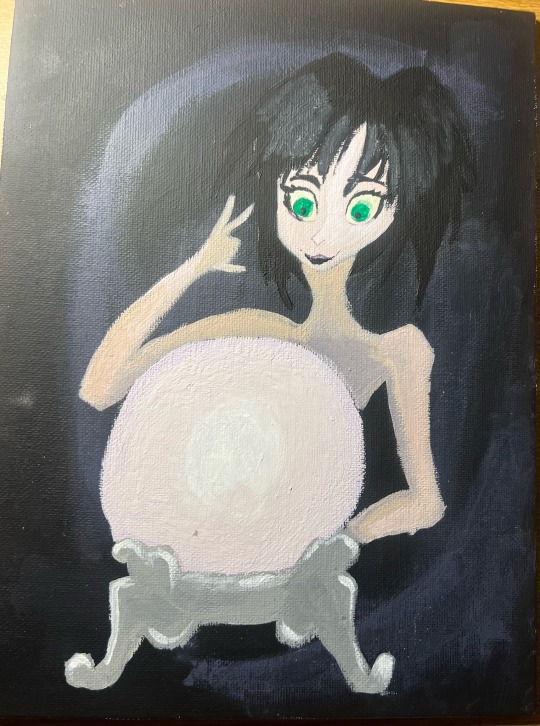
𝐂𝐫𝐲𝐬𝐭𝐚𝐥 𝐛𝐚𝐥𝐥 𝐨𝐧 𝐭𝐡𝐞 𝐭𝐚𝐛𝐥𝐞
𝐬𝐡𝐨𝐰𝐢𝐧𝐠 𝐭𝐡𝐞 𝐟𝐮𝐭𝐮𝐫𝐞 𝐭𝐡𝐞 𝐩𝐚𝐬𝐭
𝐬𝐚𝐦𝐞 𝐜𝐚𝐭 𝐰𝐢𝐭𝐡 𝐭𝐡𝐞𝐦 𝐞𝐯𝐢𝐥 𝐞𝐲𝐞𝐬
𝐀𝐧𝐝 𝐈 𝐤𝐧𝐞𝐰 𝐢𝐭 𝐰𝐚𝐬 𝐚 𝐬𝐩𝐞𝐥𝐥 𝐬𝐡𝐞 𝐜𝐚𝐬𝐭! 
Cliff Richard, Devil Woman (1976)
3 notes
·
View notes
Text

New Article:
Eddie Redmayne On How His Emcee in Cabaret Is a Shape Shifter.
The Olivier and Oscar winner talked with Playbill about coming back to the stage, and whether he's coming to Broadway.
Playbill, by Talaura Harms, October 16, 2023.
While a few fortunate Broadway theatregoers were able to catch the recent Olivier Award-winning revival of Cabaret, the majority of us are anxiously awaiting its Spring 2024 arrival on Broadway. And even more, we are anxiously awaiting the casting news to see if one, both, or neither of its Olivier-winning stars, Eddie Redmayne and Jessie Buckley, will come with it.
While we impatiently tap our feet as we wait to hear, we've at least had the cast recording to keep us company. Released in January 2023, the album features Redmayne as The Emcee and Buckley as Sally Bowles.
Playbill got the chance to catch up with Redmayne recently to chat about his wild, weird performance and, basically, harass him about his 13 year (and counting) absence from the Broadway stage.
Redmayne made his Broadway debut in 2010 when the Donmar Warehouse production of John Logan's Red transferred from the West End. The two-hander starred Alfred Molina as artist Mark Rothko and Redmayne as his assistant. Redmayne earned an Olivier and a Tony for his performance.
Redmayne says, only partly in jest, that one of the reasons he hasn't returned to Broadway is because Red was perfect. "It was one of the greatest experiences of my life—working with Fred Molina on a play that I loved, and with Michael Grandage," he says. "It went so well that I was like, 'I don't think I'm ever going to do a Broadway play ever again. It's never ever gonna go as well as that.'"
Following Red, he returned to the West End for another production with Grandage, a short run as the title role in Shakespeare's Richard II. Then his film career took off. His 2012 performance as Marius in the Les Misérables film set musical theatre hearts aflutter. Then in 2015, he was awarded an Oscar for his role as Stephen Hawking in The Theory of Everything and garnered another nomination the following year for The Danish Girl.
He did not return to the stage until the 2021 West End revival of Kander and Ebb's Cabaret. The chance to create The Emcee anew was too good to pass up. "The abstract nature of the character—the fact that does the character even really exist? Is it a figment of the imagination? I mean, it's so ripe for interpretation," says Redmayne. "And the show is so beautifully constructed, but yet it allows for interpretation. That was the appeal."
The Emcee is so ripe for interpretation because the character only exists in the Kit Kat Club and not within narrative story of Cabaret. The diegetic Kit Kat Club numbers comment on the action of the plot—chanteuse Sally Bowles' relationship with English writer Cliff during the Nazi rise to power in Berlin—but the Kit Kat Club songs are not a part of the action.
And this new immersive production takes that meta-theatricality to new heights—London's Playhouse Theatre has been transformed to look like a '40s Berlin nightclub, with performers interacting with he audience during the preshow.
Redmayne's initial actor's instinct was to create a backstory for The Emcee, but in the end, his attempts simply were not supported by the text. So, he tried something else. "What was very liberating about playing this role was that I approached it, ultimately, in a very different way—which was throwing clay at a wall in big kind of broad gestures and then trying to refine it as it were," Redmayne explains. "Then, as we began to run the show, making sense of a psychology through it—working backwards, and working with the understanding that there's an abstraction to the character."
But Redmayne was excited about shaking his process up a bit. He'd only done film for the 10 years prior to Cabaret, and he was ready to dive into stage work again. In the months leading up to Cabaret rehearsals, he even enrolled in a training course at Lecoq (formally, L'École Internationale de Théâtre Jacques Lecoq), a physical theatre school in Paris. "I was working with actors aged 18 to 60 from all over the world. It was huge improvisations, the whole thing was in French, and there were these two French doyennes of Lecoq's training going 'No!' and it was kind of brutal, but it was exactly what I needed," he says, laughing. "It took me out of my head. I felt so much more physically free to humiliate myself. By the time I came into the rehearsal room for Cabaret, the experience was one of release in some ways."
So with his newfound physical freedom, and the idea of The Emcee as an abstraction unclouded by a backstory, Redmayne was ready to create his character. The vocal performance is almost otherworldly. Redmayne explains the genesis of his sound: "There was this idea of a shapeshifter. That was something that [director] Rebecca [Frecknall] and Tom Scott, our production designer, talked about—that my version of The Emcee could puppeteer this group of Kit Kat dancers and conjure these characters. But, ultimately, when fascism arrives, he is able to get out absolutely fine. He can shape shift his way out of that situation. And I wanted vocally for that to translate as well."
Working with Musical Director Jennifer Whyte ("She had brilliant ideas," he adds), Redmayne created different voices and sounds for different songs. In "Tomorrow Belongs to Me," he sang live over his own recorded harmony lines. "So, in that, there was a delicate side. Then there was the raucous, quite nasal version of The Emcee in 'Willkommen.' And then, particularly within 'I Don't Care Much,' I wanted you to hear him move from one voice into the other within the same song. So he's sort of demonstrating to the audience the power he has in his passivity, just to keep changing the versions of himself," explains Redmayne, then quickly adding,"That sounds bloody pretentious." (Clearly Mr. Redmayne does not understand how hard we can nerd out about a vocal performance.)
Musical theatre is in Redmayne's blood, he says. His first job, after all, was playing a workhouse boy in a West End production of Oliver! And he was a choral scholar in his years at Cambridge. And returning to Cabaret after years in film was a particular joy for him. "I do think that music and singing jumps synapses into people's souls and you connect emotionally in a beautifully honest way," he says.
But he's more proud of just being involved with this particular production. He's been back to see every new cast as they arrive in the West End. "Rebecca has created a version of the show that champions individuality," he says. "Getting to watch a production that you've been in, but in a completely different interpretation—having seen all of The Emcees and Sallys and seen the breadth and brilliance of their voices—I just feel proud to be a part of something that keeps living."
And, of course, we asked if he'll be coming to Broadway with Cabaret in the spring. Of course we did. "You know more about it than I do," said the shape shifter, easily getting out of that one.
The Rebecca Frecknall-directed production of the Tony-winning 1966 Broadway musical, currently running at London's Kit Kat Club (a.k.a. the renovated Playhouse Theatre), officially opened December 12, 2021. It currently stars Jake Shears as The Emcee and Rebecca Lucy Taylor as Sally Bowles. Mason Alexander Park and Maude Apatow just completed their three-month runs in the show.
Cabaret is slated to arrive at the August Wilson Theatre this season. Dates and cast are to be announced.
Photo by Marc Brenner
#eddie redmayne#eddieredmayne#redmayne#cabaret at the kit kat club#the emcee#cabaret2021#broadway#playbill#october 2023
24 notes
·
View notes
Text
Artist Countdown: Cliff Richard Top 35 Hits
Sir Cliff Richard OBE (born Harry Rodger Webb, October 14, 1940) is a British pop singer, musician, performer, actor and philanthropist. He is the third-top-selling singles artist in the United Kingdom’s history, with total sales of over 21 million units in the UK and has reportedly sold an estimated 250 million records worldwide. With his backing group the Shadows, Richard, originally…

View On WordPress
0 notes